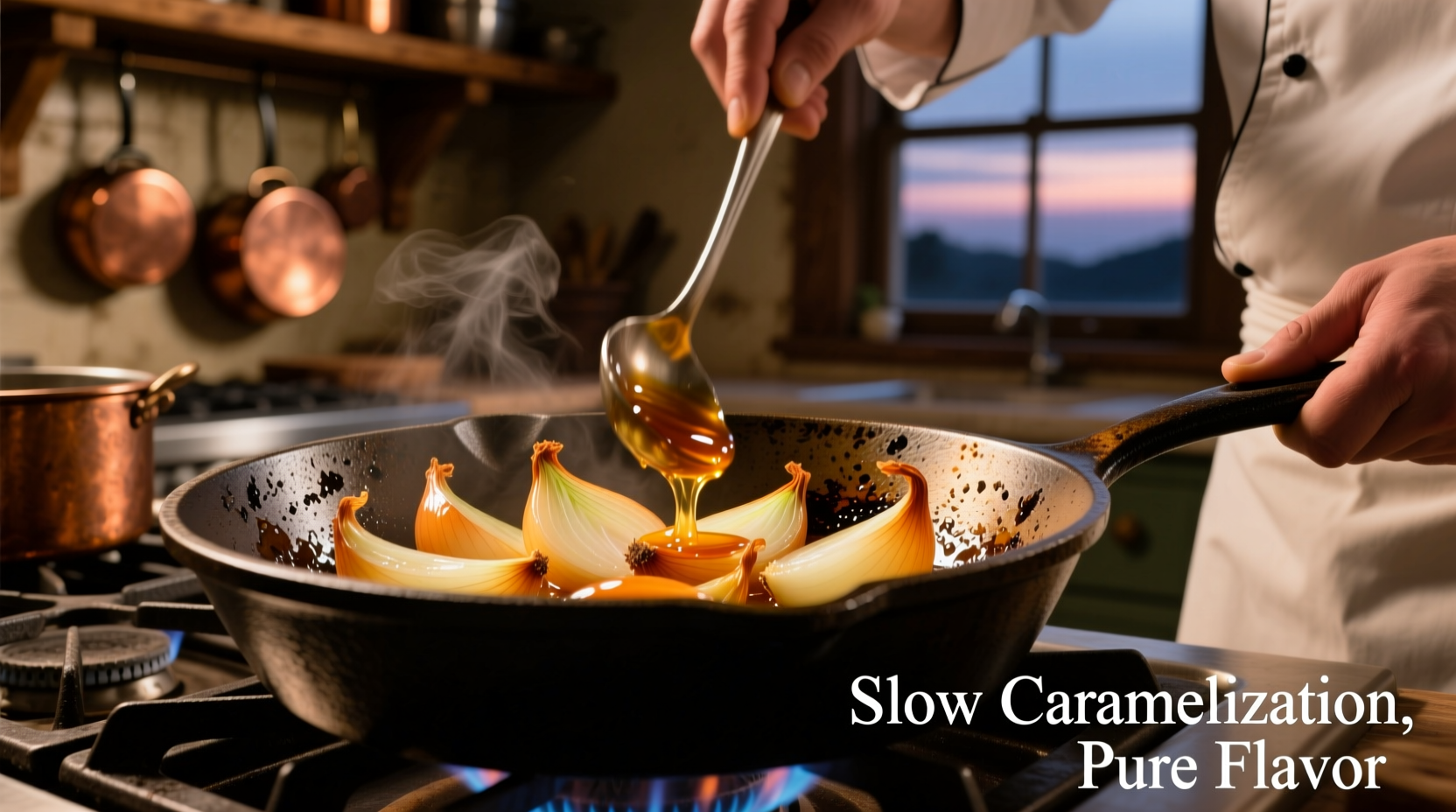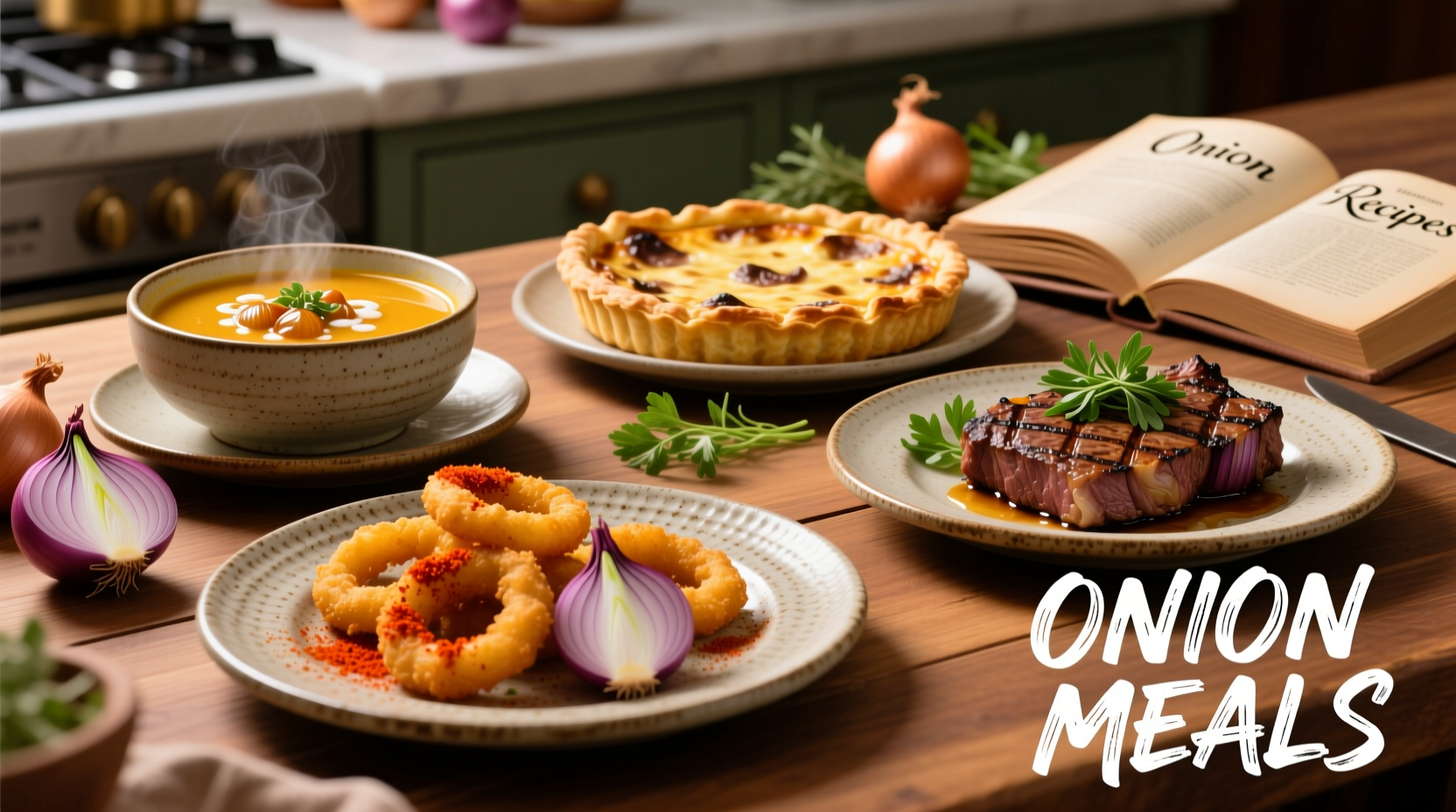Onions form the flavor foundation of countless global cuisines for good reason: when properly prepared, they add complex sweetness, savory depth, and aromatic richness to virtually any dish. Professional chefs rely on onions as their secret weapon for building layers of flavor, and home cooks can achieve restaurant-quality results with the right techniques. This comprehensive guide reveals how to select, prepare, and cook with onions to create memorable meals that satisfy both taste and nutrition requirements.
Understanding Onion Varieties and Their Culinary Applications
Not all onions perform equally in every dish. Choosing the right variety makes the difference between a balanced flavor profile and an overpowering bite. The following comparison helps you select the perfect onion for your cooking needs:
| Onion Type | Sweetness Level | Best Cooking Methods | Ideal Dish Applications |
|---|---|---|---|
| Yellow Onions | Moderate | Caramelizing, sautéing, roasting | French onion soup, stews, meat dishes |
| Red Onions | Mild to moderate | Raw applications, quick pickling | Salads, salsas, grilled dishes |
| White Onions | Sharp | High-heat cooking, blending | Mexican cuisine, pico de gallo, stir-fries |
| Sweet Onions (Vidalia, Walla Walla) | High | Raw consumption, gentle cooking | Sandwiches, salads, onion rings |
This comparison reflects research from the USDA Agricultural Research Service on onion composition and flavor profiles. Sweet onions contain higher sugar content (approximately 5-7%) compared to yellow onions (3-5%), explaining their superior performance in raw applications and gentle cooking methods.
Mastering Essential Onion Preparation Techniques
Proper preparation unlocks onions' full flavor potential while minimizing common cooking challenges. Follow these professional chef techniques for optimal results:
The Science of Reducing Tears While Cutting
Onion tears result from sulfur compounds released when cells are damaged. To minimize discomfort:
- Cool onions in the refrigerator for 30 minutes before cutting
- Use a sharp knife to create cleaner cuts with less cell damage
- Cut under running water or near a fan to disperse volatile compounds
- Remove the root last, as it contains the highest concentration of lachrymatory factors
Optimal Cooking Methods for Flavor Development
Different cooking techniques produce dramatically different flavor outcomes:
Sautéing: Medium heat with oil or butter for 5-7 minutes creates a balance of sweetness and savory notes. Ideal for building flavor bases in sauces and stir-fries.
Caramelizing: Low heat for 30-45 minutes transforms onions into rich, sweet complexity. Requires patience—frequent stirring prevents burning while developing deep flavor compounds.
Roasting: High heat (400°F/200°C) for 20-25 minutes creates concentrated sweetness with charred edges. Perfect for adding depth to vegetable medleys and meat dishes.

15 Practical Onion Meal Recipes for Every Occasion
These tested recipes showcase onions' versatility across meal types and cooking skill levels. Each includes time-saving tips and flavor enhancement techniques.
Quick Weeknight Solutions (Under 30 Minutes)
Onion and Mushroom Stir-Fry—Combine thinly sliced yellow onions with mushrooms, garlic, and soy sauce for a savory umami-packed side dish that complements grilled proteins. The onions' natural sugars balance the soy's saltiness while creating a glossy sauce through the Maillard reaction.
Caramelized Onion Quesadillas—Spread sweet onion jam between tortillas with cheese for a satisfying vegetarian meal. The onions' natural sugars caramelize beautifully when cooked between the tortillas, creating a rich filling with minimal effort.
Meal Prep Friendly Options
Onion and Lentil Soup—This nutrient-dense soup features a triple onion technique: raw shallots for brightness, sautéed yellow onions for depth, and caramelized red onions for finishing. Prepare a large batch for freezer-friendly meal prep that maintains quality for up to three months.
Roasted Vegetable Medley with Onions—Combine quartered onions with seasonal vegetables for a versatile side that pairs with virtually any protein. The onions' natural sugars help create a flavorful glaze on all vegetables during roasting.
Special Occasion Dishes
Classic French Onion Soup—The ultimate showcase for onion's transformative potential. Properly caramelized onions create a rich broth base that, when topped with toasted bread and melted Gruyère, becomes an elegant starter worthy of any dinner party.
Onion Tart with Goat Cheese—Thinly sliced red onions layered with herbed goat cheese on puff pastry creates an impressive vegetarian centerpiece. The onions' mild sweetness balances the cheese's tanginess for sophisticated flavor harmony.
Nutritional Benefits of Onion-Based Meals
Onions contribute significant nutritional value beyond their flavor contributions. According to research published in the Journal of Agricultural and Food Chemistry, onions contain quercetin, a flavonoid with antioxidant properties that may support cardiovascular health. One medium onion provides approximately 44 calories, 1 gram of protein, and 10% of the daily recommended value of vitamin C.
Cooking methods affect nutritional retention—gentle sautéing preserves more beneficial compounds than boiling, while caramelizing increases certain antioxidant activities through the formation of new compounds during the browning process.
Contextual Considerations for Perfect Onion Meals
Understanding these context boundaries ensures successful onion-based cooking:
- Storage limitations: Whole onions last 1-2 months in cool, dark places but degrade rapidly in humidity. Cut onions maintain quality for only 7-10 days refrigerated.
- Flavor balance: Onions overpower delicate dishes when used in excess. Maintain proper ratios—typically 1 part onion to 4 parts main ingredient for balanced flavor.
- Cooking time variables: Onion size and variety significantly impact cooking duration. Sweet onions require less time to caramelize than yellow onions due to higher sugar content.
- Dietary considerations: While onions enhance most dishes, those following low-FODMAP diets should limit portions to 30 grams per serving to avoid digestive discomfort.
Troubleshooting Common Onion Cooking Challenges
Even experienced cooks encounter issues with onion-based dishes. These solutions address frequent problems:
Problem: Onions burning before softening
Solution: Start with lower heat and add a tablespoon of water to create steam, covering the pan initially to soften onions before browning.
Problem: Excessive sharpness in finished dish
Solution: Soak sliced onions in cold water for 10-15 minutes before use, or add a pinch of sugar during cooking to balance acidity.
Problem: Inconsistent caramelization
Solution: Maintain steady medium-low heat, stirring every 5-7 minutes. Adding a small amount of baking soda (1/16 teaspoon per pound of onions) accelerates the Maillard reaction without compromising flavor.
Advanced Onion Techniques for Flavor Mastery
Elevate your cooking with these professional methods:
- Onion oil infusion: Slowly heat sliced onions in neutral oil until translucent, then strain for a flavorful cooking medium that enhances sautés and dressings.
- Onion jam preparation: Cook down onions with apple cider vinegar and brown sugar for a versatile condiment that complements cheeses, meats, and sandwiches.
- Layered onion cooking: Combine different onion varieties in a single dish—sauté yellow onions for base flavor, finish with raw red onions for brightness, and garnish with caramelized sweet onions for complexity.











 浙公网安备
33010002000092号
浙公网安备
33010002000092号 浙B2-20120091-4
浙B2-20120091-4